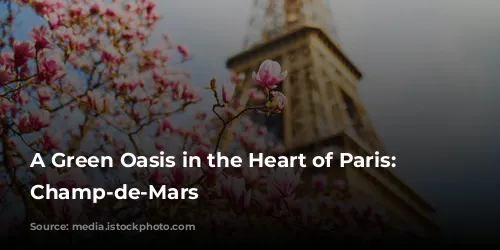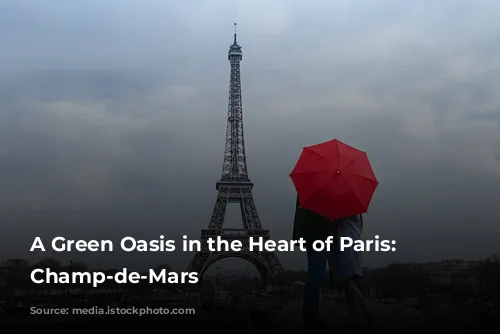Imagine a vast green space in the heart of Paris, a place where history whispers through the trees and laughter echoes through the air. This is the Champ-de-Mars, a sprawling public garden that captivates visitors with its beauty and rich past. Located between the iconic Eiffel Tower and the Ecole Militaire, the Champ-de-Mars is a true gem of the City of Lights.

From Roman Military Grounds to Revolutionary Hub
The Champ-de-Mars, meaning “Field of Mars”, borrows its name from the Roman god of war. This is no coincidence; the name reflects the space’s initial purpose. In Roman times, “Fields of Mars” were vast training grounds for soldiers, and this Parisian park was no exception. The Champ-de-Mars, with its vast expanse, served as a training ground for the French military, capable of accommodating up to 10,000 soldiers at a time. It was a place of discipline and order, enclosed by imposing iron gates, a stark contrast to the rural landscape that once existed in this area.
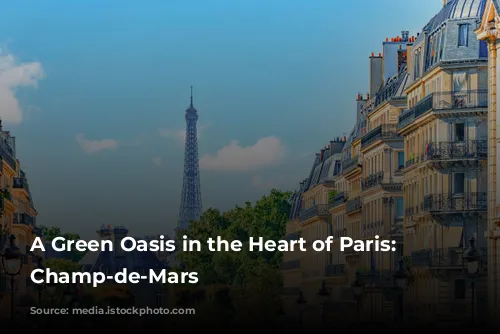
A Stage for Revolution and Celebration
Before the French Revolution, the Champ-de-Mars was a peaceful space, primarily used for market gardening. But this tranquility was shattered by the construction of the Ecole Militaire in 1765. This grand military institution brought a new purpose to the Champ-de-Mars, shaping it into a site of military importance. It was from this very spot that the first unmanned airship took flight in 1783, marking a moment of technological advancement.
However, the Champ-de-Mars became a pivotal stage for the French Revolution. The iconic Feast of the Federation, held on July 14, 1790, was a joyous event that cemented the Revolution’s progress. Over 300,000 people gathered, a sea of humanity united in their desire for change. King Louis XVI himself swore an oath to uphold the Constitution, a symbolic gesture that solidified the shift in power.
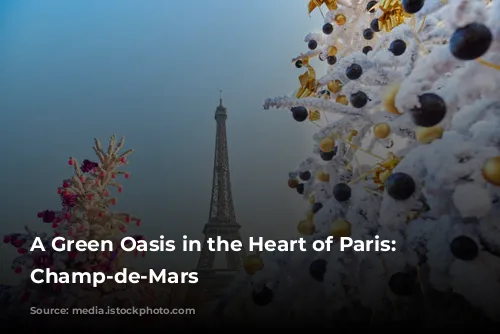
A Witness to Both Joy and Tragedy
But the Champ-de-Mars was not just a stage for celebration; it was also a site of bloodshed and despair. The “Massacre of the Champ-de-Mars,” which occurred on July 17, 1791, stained the park’s history with tragedy. This massacre arose from a petition signed by thousands, demanding a change in the decrees that did not explicitly abolish the monarchy. The bloodshed that followed, with 50 dead and hundreds wounded, cast a shadow over the revolution’s ideals.
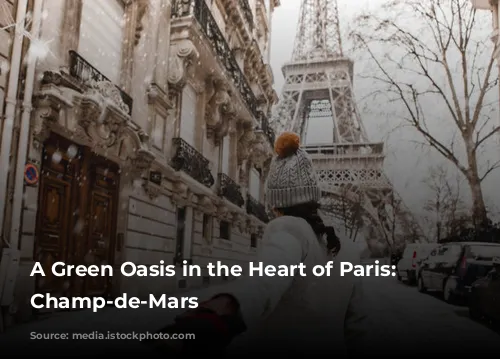
A Canvas for Symbolism and Strife
The Champ-de-Mars continued to be a canvas for the Revolution’s turmoil. In 1794, the Feast of the Supreme Being was held, a bizarre event that aimed to replace Catholicism with a new, revolutionary faith. Jacques-Louis David, a prominent artist of the time, was a driving force behind this spectacle. This event, marked by a towering Liberty Tree and an ancient column, highlighted the revolution’s attempt to reshape not just political power but also societal values.
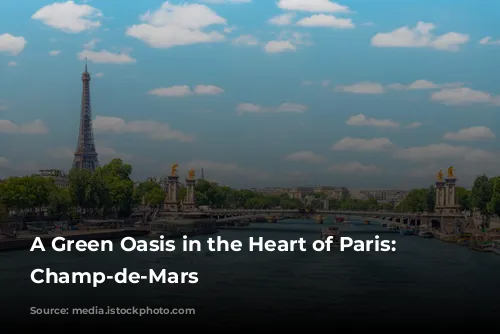
An Ever-Changing Stage: The Champ-de-Mars Under the Directory
The years under the Directory (1795-1799) saw a continuation of festivals and celebrations on the Champ-de-Mars. These events, though deemed ridiculous by some, were a testament to the revolutionary fervor that still pulsed through the city. From the Festival of Agriculture to the commemoration of victories, the Champ-de-Mars became a platform for showcasing the changing political landscape.
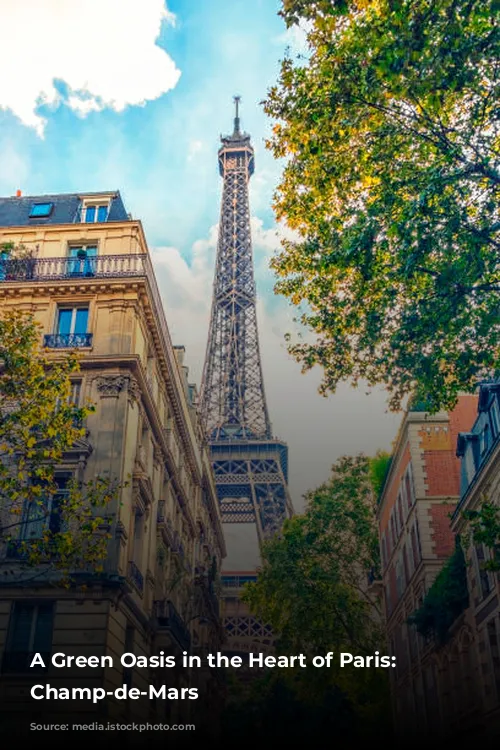
Napoleon’s Triumph and Fall
The early 19th century brought Napoleon to the Champ-de-Mars. In 1815, he proclaimed the “Champ-de-Mai,” a ceremony that showcased his power and ambition. This grand event, with its vast military display, marked a period of intense political change. However, the echoes of Napoleon’s ambition faded with his defeat at the Battle of Waterloo, signaling the end of his reign.
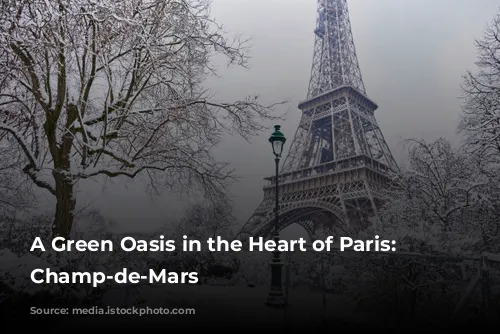
A Hub of Progress and World Fairs
The Champ-de-Mars’s history is intertwined with significant events in Paris’s development. It became the stage for several World Fairs, including those of 1867, 1878, 1889, 1900, and 1937. It was during the 1889 World Fair that the Eiffel Tower rose majestically on the Champ-de-Mars, becoming a permanent symbol of the city. The 1900 World Fair saw the construction of the Palace of Electricity and the Machine Gallery, showcasing the strides made in technology and industry.
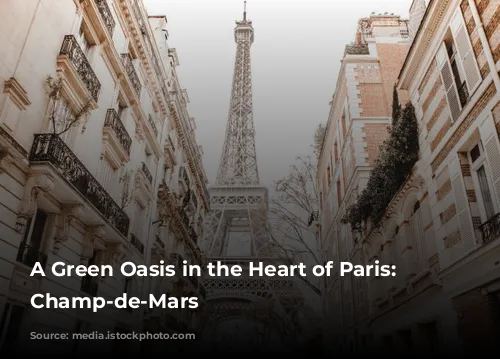
Beyond the Eiffel Tower: A Place of Play and Leisure
Today, the Champ-de-Mars is no longer a stage for revolutions or world fairs. It has transformed into a beloved public garden, a place for relaxation, play, and celebration. The lush green lawns are perfect for picnics, sunny afternoons offer a respite from the city’s hustle, and children can enjoy pony rides, puppet shows, and playgrounds.
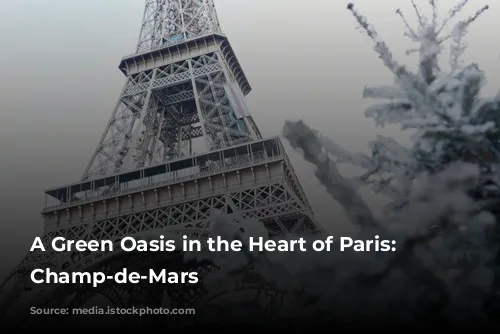
Fireworks, Concerts, and Lasting Memories
Every year, the Champ-de-Mars comes alive on July 14th with the National Day fireworks. These spectacular displays, set against the backdrop of the Eiffel Tower, draw thousands of spectators, creating a vibrant atmosphere. The park also hosts numerous concerts and performances, such as the 1995 UNESCO celebration by Jean Michel Jarre, the 2000 concert by Johnny Hallyday, and the 2007 “Fraternity” concert.
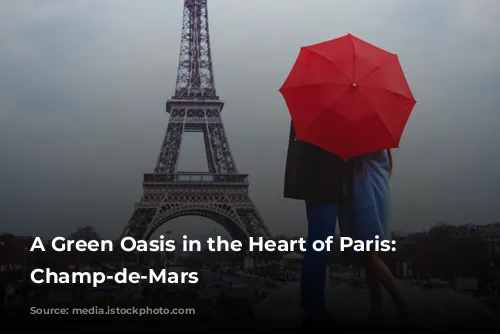
A Transformation and a New Era
The Champ-de-Mars continues to evolve, adapting to the changing needs of Paris. With the recent renovation of the Grand Palais, a temporary structure was built on the Champ-de-Mars, showcasing the park’s flexibility and its ability to host major events.
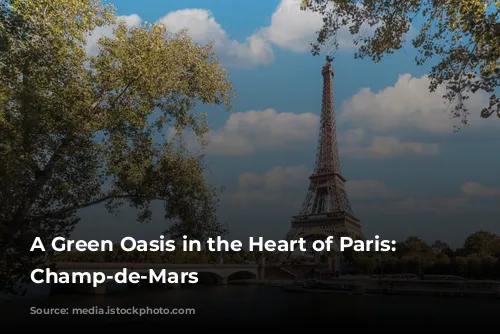
Walking Through History
As you wander through the Champ-de-Mars, take a moment to appreciate the monuments and statues that dot its landscape. Each tells a story, a testament to the rich and diverse history of this iconic Parisian space. From the Eiffel Tower to the Ecole Militaire, the Champ-de-Mars is a tapestry woven with centuries of history, making it a must-visit for any traveler to Paris.
The Champ-de-Mars, more than just a park, is a living, breathing symbol of Paris’s spirit. It is a place where the past and present collide, where the grandeur of history blends seamlessly with the everyday joys of life.
